 |
 |
 |
| |
The Antiviral Response to the Toll-Like Receptor 7 Agonist GS-9620 in Preclinical Models of Chronic Hepatitis B Is Associated With an Intrahepatic Cytotoxic T Cell Transcriptional Signature
|
| |
| |
Reported by Jules Levin
AASLD 2014 Nov 7-11 Boston
Li Li,1 Peng Yue,1 Robert E. Lanford,2 Stephan Menne,3 Congrong Niu,1 Stephane Daffis,1 Daniel B. Tumas,1 Abigail Fosdick,1 William E. Delaney IV,1 Simon P. Fletcher1
1Gilead Sciences, Inc., Foster City, CA; 2Texas Biomedical Research Institute, San Antonio, TX; 3Georgetown University Medical Center, Washington, DC
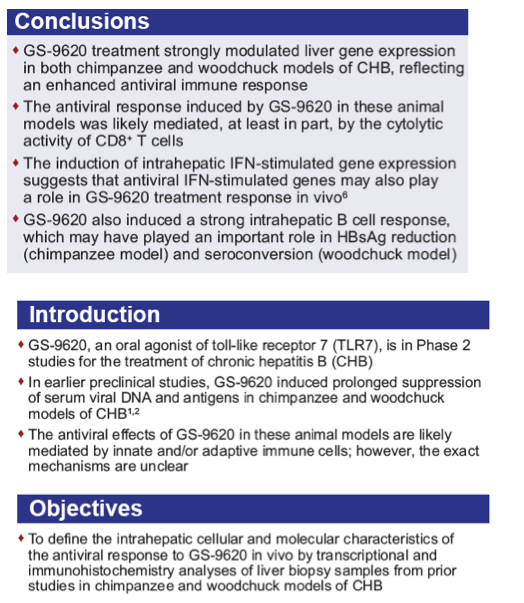
Program abstract:
Background & Aims: GS-9620, an oral agonist of toll-like receptor 7 (TLR7), is in phase 2 studies for the treatment of chronic hepatitis B (CHB). In earlier preclinical studies, GS-9620 induced prolonged suppression of serum viral DNA and antigens in the chimpanzee and woodchuck models of CHB. Here we present a follow-up transcriptional analysis of liver biopsy samples from these animal model studies in order to define the intrahepatic cellular and molecular characteristics of the antiviral response to GS-9620 in vivo.
Methods: Whole transcriptome analysis of liver biopsies taken from chronically infected chimpanzees (n=3) and woodchucks (n=7) during treatment with GS-9620 or placebo (woodchuck study only, n=7) was performed by RNA-Seq. Intrahepatic transcriptional responses were characterized by gene set enrichment analysis (GSEA), Ingenuity Pathway Analysis (IPA) and a gene module approach.
Results: GS-9620 induced a broad intrahepatic immune response in HBV-infected chimpanzees, with type I interferon (IFN), T cell and B cell gene signatures prominently up-regulated. Notably, the transcriptional signature induced by GS-9620 was significantly enriched with genes induced during HBV clearance in acutely infected chimpanzees (Wieland et al. (2004) PNAS 101: 6669-74).
Underscoring the parallels with natural clearance of acute infection, the HBsAg reduction by GS-9620 in HBV-infected chimpanzees was associated with up-regulation of intrahepatic CD8+ T cell and cytotoxic cell gene signatures, as well as B cell and plasma cell transcriptional profiles. Notably, the elevated expression of cytotoxic cell-associated genes (e.g. perforin, granzyme B and Fas ligand) was accompanied by significant induction of transcriptional signatures consistent with hepatocyte apoptosis (e.g. caspase 3 and caspase 7), as well as hepatocyte regeneration and proliferation (e.g. cell cycle regulatory genes).
Importantly, GS-9620 also induced an intrahepatic cytotoxic T cell gene signature in chronically infected woodchucks, suggesting this is a key mechanism of antiviral response to GS-9620 in both chimpanzee and woodchuck models of CHB. Likewise, the induction of intrahepatic interferon-stimulated gene (ISG) expression suggests that antiviral ISGs may also play a role in GS-9620 treatment response in these animal models.
Conclusion: These data indicate that the antiviral response induced by GS-9620 in preclinical models of CHB was likely mediated, at least in part, by the cytolytic activity of CD8+ T cells. Induction of a strong intrahepatic B cell response may also have played an important role in HBsAg antigen seroconversion.
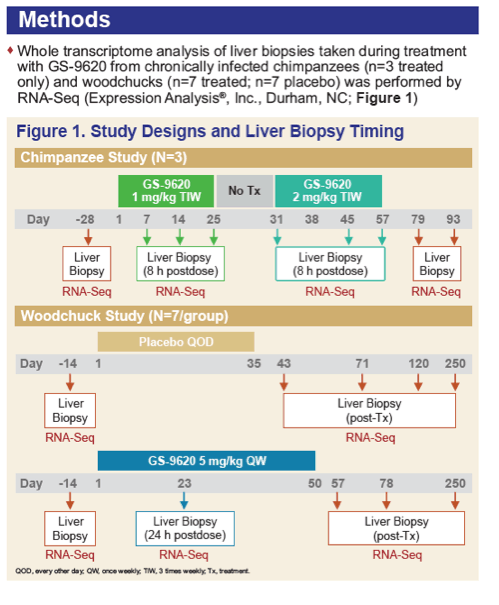
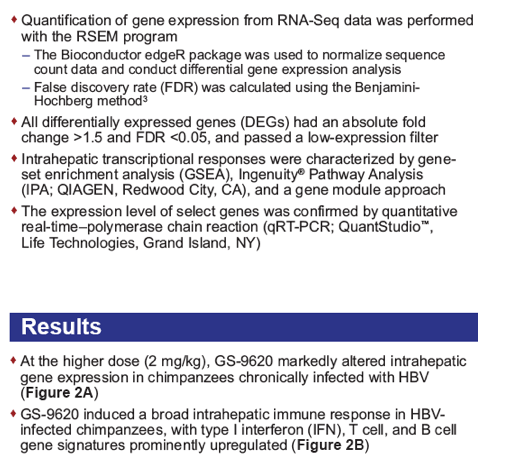
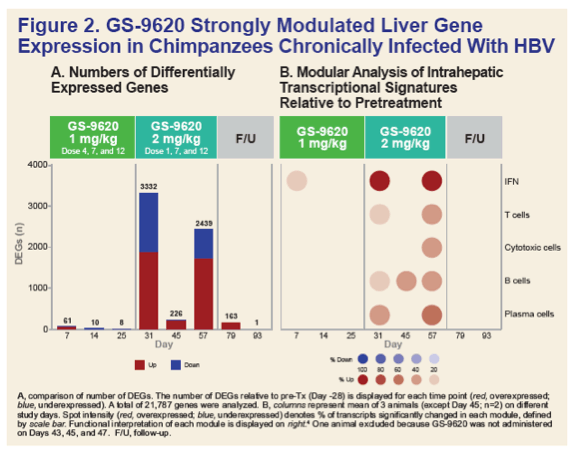
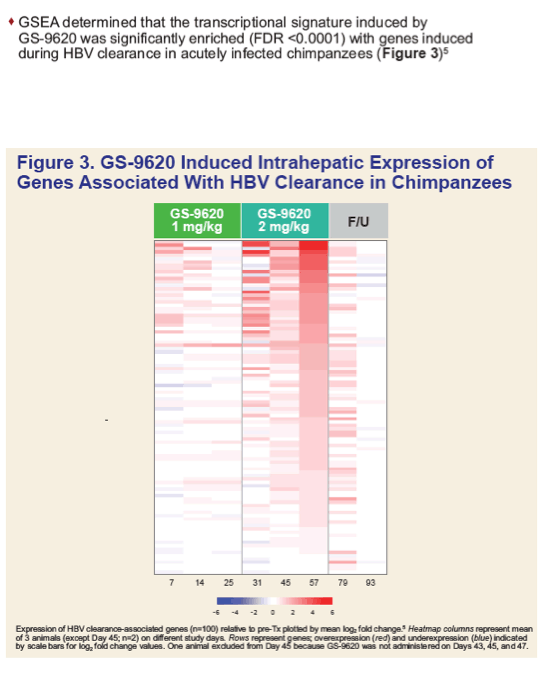
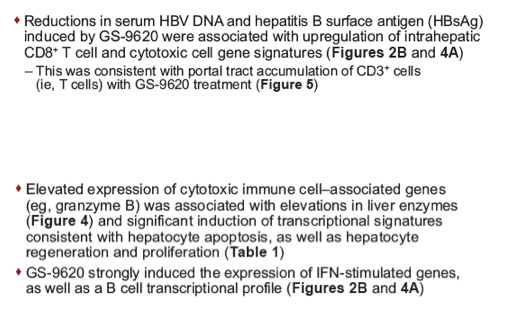
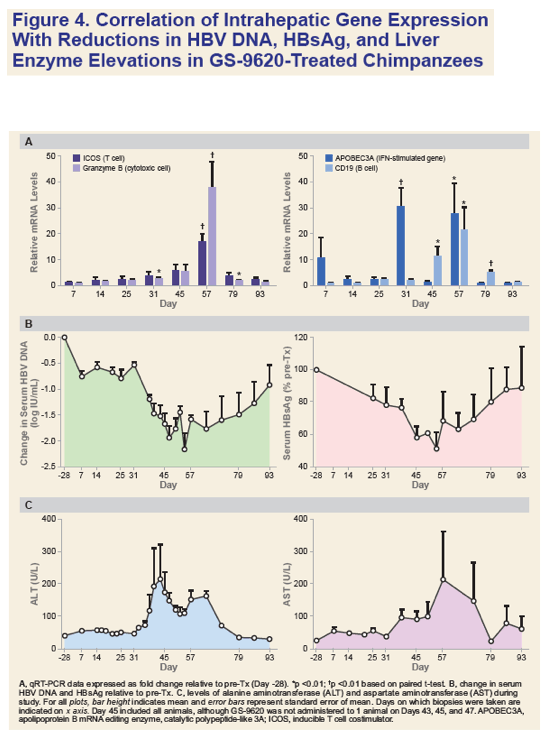
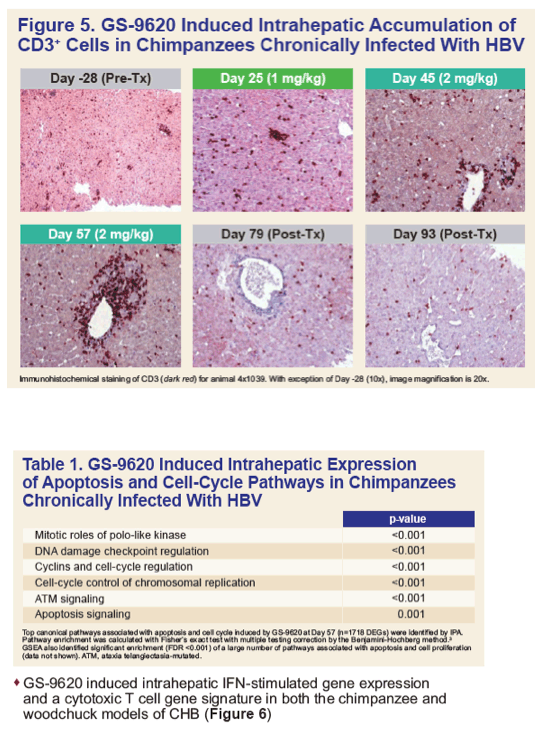
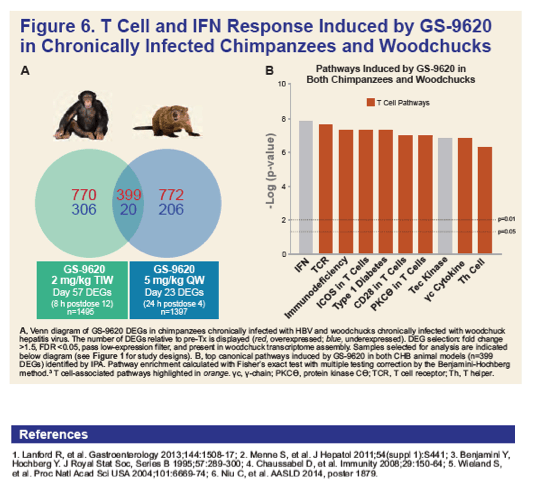
|
| |
|
 |
 |
|
|